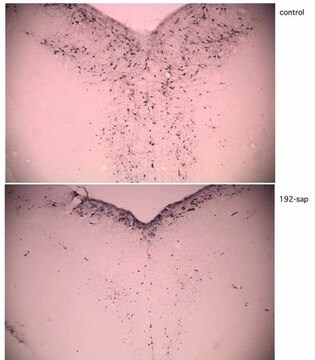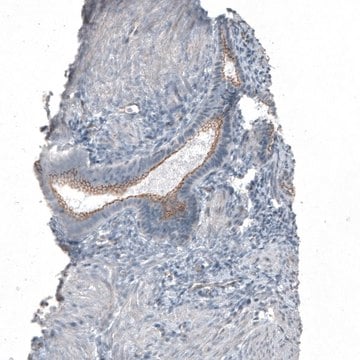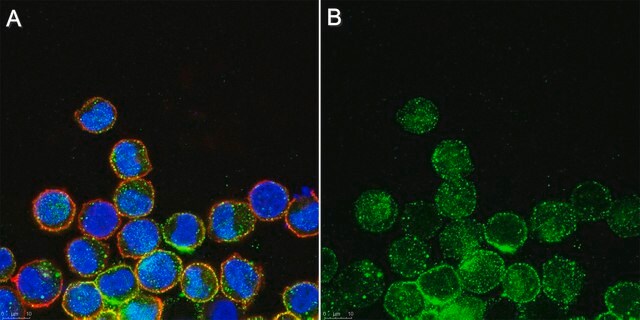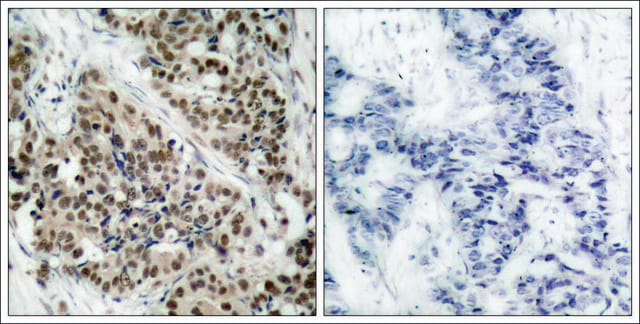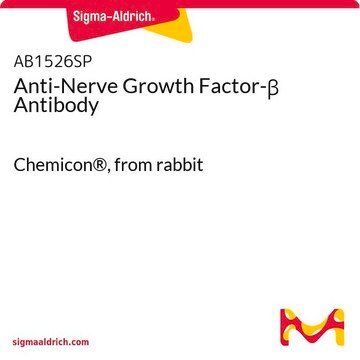MAB390
Anti-p75 LNGFR Antibody, Saporin conjugated, clone 192
clone 192, Chemicon®, from mouse
Synonim(y):
CD271 antigen, Low affinity neurotrophin receptor p75NTR, Low-affinity nerve growth factor receptor, NGF receptor, low affinity nerve growth factor receptor, nerve growth factor receptor, nerve growth factor receptor (TNFR superfamily, member 16), p75 IC
About This Item
Polecane produkty
pochodzenie biologiczne
mouse
Poziom jakości
białko sprzężone
saporin
forma przeciwciała
purified immunoglobulin
rodzaj przeciwciała
primary antibodies
klon
192, monoclonal
reaktywność gatunkowa
rat
spodziewany brak reakcji z
human, mouse
opakowanie
antibody small pack of 25 μg
producent / nazwa handlowa
Chemicon®
metody
immunocytochemistry: suitable
immunohistochemistry: suitable (paraffin)
izotyp
IgG1
numer dostępu NCBI
numer dostępu UniProt
Warunki transportu
wet ice
docelowa modyfikacja potranslacyjna
unmodified
informacje o genach
human ... NGFR(4804)
Opis ogólny
Specyficzność
Immunogen
Zastosowanie
A previous lot of this antibody was used in IH(P).
Immunocytochemistry:
A previous lot of this antibody was used in IC.
Optimal working dilutions must be determined by end user.
Neuroscience
Neurodegenerative Diseases
Neurochemistry & Neurotrophins
Postać fizyczna
Przechowywanie i stabilność
Komentarz do analizy
Brain tissue
Inne uwagi
Informacje prawne
Oświadczenie o zrzeczeniu się odpowiedzialności
Not finding the right product?
Try our Narzędzie selektora produktów.
Kod klasy składowania
12 - Non Combustible Liquids
Klasa zagrożenia wodnego (WGK)
WGK 2
Temperatura zapłonu (°F)
Not applicable
Temperatura zapłonu (°C)
Not applicable
Certyfikaty analizy (CoA)
Poszukaj Certyfikaty analizy (CoA), wpisując numer partii/serii produktów. Numery serii i partii można znaleźć na etykiecie produktu po słowach „seria” lub „partia”.
Masz już ten produkt?
Dokumenty związane z niedawno zakupionymi produktami zostały zamieszczone w Bibliotece dokumentów.
Nasz zespół naukowców ma doświadczenie we wszystkich obszarach badań, w tym w naukach przyrodniczych, materiałoznawstwie, syntezie chemicznej, chromatografii, analityce i wielu innych dziedzinach.
Skontaktuj się z zespołem ds. pomocy technicznej

